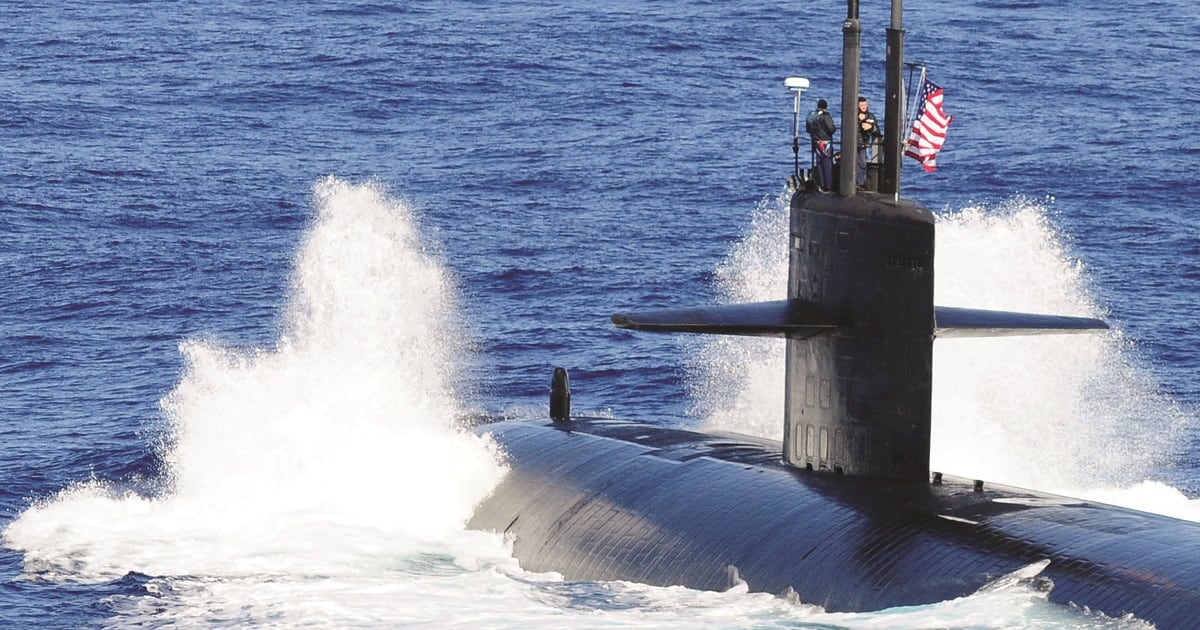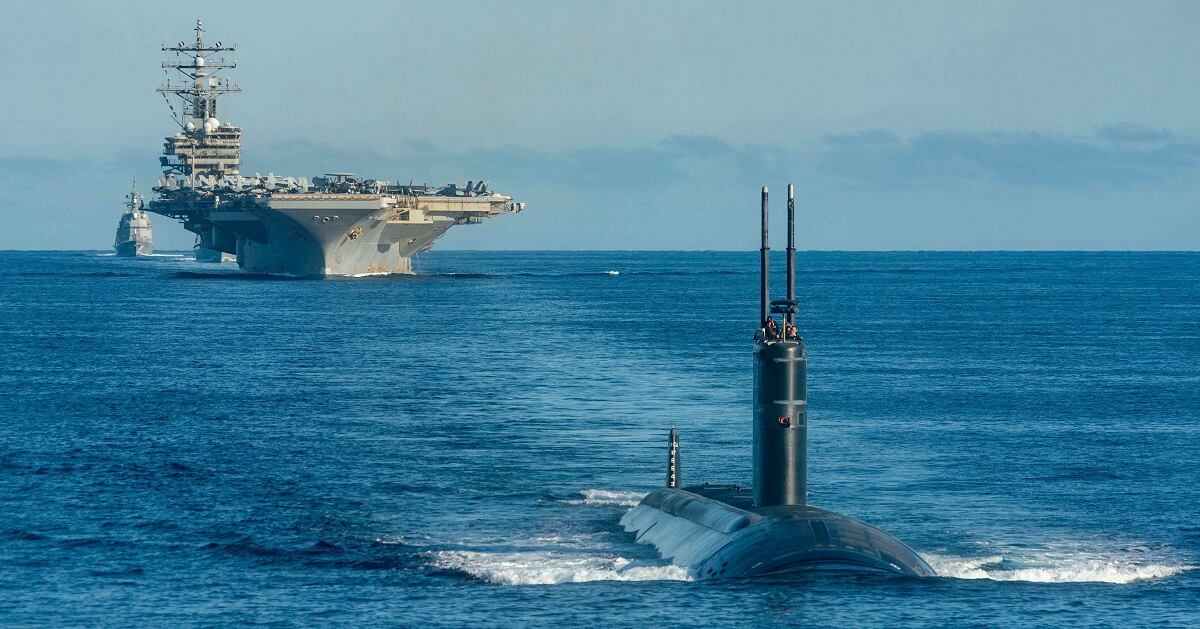Submarines are a major part of China’s naval strategy. And U.S. underwater sensors are a major threat to those subs, Chinese experts warn.
Thus, some People’s Liberation Army Navy, or PLAN, officers are advocating a systematic attempt to destroy America’s undersea sensor network in time of war. This includes destroying, sabotaging or spoofing underwater microphones using a variety of countermeasures, from undersea drones to China’s huge fleet of commercial fishing vessels.
Chinese experts believe that “the U.S. undersea surveillance system suffers from a number of vulnerabilities, amplified by the sheer scale of the Western Pacific battlespace,” Ryan Martinson, a professor at the China Maritime Studies Institute at the U.S. Naval War College, wrote in an essay for the Center for International Maritime Security. “If enough nodes are degraded, the system as a whole may lose its functionality.”
Ironically, American and Chinese views of the undersea balance of power seem mirror images. The U.S. and its Pacific allies worry over China’s growing submarine fleet, which the Pentagon predicts will reach 65 units this year and 80 by 2035. China already can deploy six nuclear ballistic and six nuclear attack submarines, plus a large number of conventional subs armed with anti-ship missiles, including 21 advanced Yuan-class diesel-electric boats.
RELATED

For its part, China worries that an intensive American anti-submarine warfare, or ASW, effort has already made Chinese subs too vulnerable.
“The PLAN is investing in submarines because it recognizes their tremendous potential deterrent and warfighting value,” Martinson wrote. “That value, however, hinges on the ability of their boats to operate undetected. According to Chinese military experts however, that basic requirement cannot be guaranteed — not even close.”
Martinson analyzed a November 2023 article written by three Chinese naval officers in Military Art, an internal Chinese military journal.
“This enables the authors to share their expertise with a candor that is rarely (if ever) seen in publicly-available PLA [People’s Liberation Army] sources,” Martinson noted.
The Military Art article expressed fears that Chinese submarines are outmatched by what the authors depict as an “integrated, three-dimensional surveillance system.” This includes warships, subs, aircraft, satellites, underwater drones, the undersea microphones of the Integrated Undersea Surveillance System, or IUSS, and surface ships hauling the Surveillance Towed Array Sensor System, or SURTASS.
Where America sees a Chinese underwater armada, China sees an American bid to achieve “unilateral transparency” under the waves. As China sees it, this ASW dragnet is so broad that it uses survey ships to map undersea terrain and water conditions for optimal submarine detection, and oceanic surveillance vessels to capture submarine acoustic signatures.
During the Cold War, the U.S. and its allies created chokepoints — such as the Greenland-Iceland-U.K., or GIUK, Gap — through which Soviet submarines would have run a gauntlet of ASW ships, planes and undersea sensors to reach the North Atlantic. Today, some Chinese experts believe the U.S. can bar its subs “from access to important sea lanes, threatening their ‘navigational security’ while transiting to and from training and operating areas,” Martinson wrote. In particular, Beijing worries about the safety of its half-dozen nuclear ballistic missile submarines.
“The probability that PRC [People’s Republic of China] submarines are discovered when leaving port is extremely high,” according to the Military Art article. “There is a fairly high probability that PRC submarines will be detected and intercepted while operating in the Near Seas.”
In turn, this admission is a “devastating indictment of the operational effectiveness of China’s submarine force,” Martinson pointed out.
One question is whether these Chinese officers are exaggerating the prowess of U.S. ASW, perhaps in a bid to secure more resources or lobby for a more aggressive maritime policy. However, Bryan Clark, a researcher at the Hudson Institute think tank and a former U.S. Navy submarine officer, believes “their overall assessment is realistic.”
“The U.S. IUSS network of fixed arrays and SURTASS ships has been effective at tracking submarines in important areas for decades,” Clark told Defense News.

Either way, some kind of Chinese response to America’s massive anti-submarine program was inevitable. In recent years, China has devoted great attention to disrupting the nervous system of the U.S. military: the elaborate and expensive networks that integrate communications, sensors, weapons and command-and-control systems. Not surprisingly, the Chinese authors advocate using the same approach to exploit multiple vulnerabilities in the U.S. ASW enterprise.
For starters, China’s own conventional military capabilities have improved to the point that American ASW platforms, such as aircraft and ships, can no longer operate close to Chinese territory, according to the Military Art article. And as some in the Trump administration would agree, U.S. forces are already overstretched.
More directly, Chinese forces can eliminate the individual nodes in the U.S. ASW system.
“Undersea cables and arrays are ‘fairly fragile and easily severed,’” while command-and-control systems – which the Chinese officers term the “Achilles heel” of the U.S. undersea sensor network – can be destroyed or disrupted through kinetic attacks or cyberwarfare.
RELATED

To knock out American ASW in the Pacific, Chinese experts urge an intensive effort that will require long-term planning and resources.
“At the level of national strategy, China needs to combine both defensive measures and countermeasures, but it must place greater emphasis on countermeasures,” Martinson explained. “That means prioritizing the development of capabilities needed to ‘attack and damage’ the U.S. undersea surveillance system.”
These new capabilities would include technology to locate hidden undersea sensors and drones, utilizing acoustic, magnetic, optical, and electronic detection as well as artificial intelligence. The authors also call for developing unmanned underwater vehicles to destroy U.S. sensor arrays.
Clark questions how easily China could disrupt the U.S. ASW network.
“The PLA could easily attack deployed SURTASS ships at the onset of a conflict and maybe attack small vehicles or fixed arrays that support IUSS,” he said. “The operation, however, would take forces away from other missions and could require a substantial amount of time.”
“Finding small items in the water column or near the seabed is difficult,” Clark added. “The operation would also keep PLA undersea forces inside the first island chain when they are better used outside the island chain during a conflict.”
Nonetheless, U.S. ASW does have vulnerabilities that China can exploit.
“The PLA may be better off overwhelming IUSS by simply mounting a large submarine deployment before a conflict,” said Clark. “U.S forces would not be able to attack PLA subs, and there wouldn’t be enough U.S. subs and DDGs [destroyers] to trail all the deploying PLA subs.”
Ultimately, whether China’s civilian and military leadership heeds the recommendations of its navy remains to be seen.
“Still, that they are being discussed by serious experts means that the PLAN may be considering them,” Martinson warned. “Thus, U.S. Navy leaders must also take them seriously.”
Michael Peck is a correspondent for Defense News and a columnist for the Center for European Policy Analysis. He holds an M.A. in political science from Rutgers University. Find him on X at @Mipeck1. His email is mikedefense1@gmail.com.





